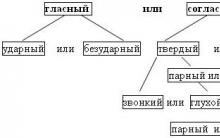In general, the whole of Great Britain is characterized by its own unique culture, traditions and symbols. The same can be said about the Principality of Wales, because it is an integral part of it. At the same time, one cannot help but note the fact that the use of dragons in paraphernalia has become very popular throughout the region. The flag of Wales, the photo of which is located below, was no exception.
Image and colors
Currently, the Welsh national symbol is a canvas with horizontal stripes of white and green, on which a red image of a dragon is applied. Literally translated, the name of the flag is translated as “Red Dragon”. Despite the fact that it was officially recognized in 1959, local residents began to use this symbol back in the days of the Roman Empire. Many monarchs were also very impressed by the combination of these colors.
First official mentions
The flag of Wales was first officially mentioned in literature in 1200. This manuscript was the legend "Llydd and Llewelis", which told how Britain was able to get rid of two dragons that fought each other all the time. All residents of the state suffered from this. According to legend, people dug a hole, which they then filled with honey. She lured the dragons, who got drunk and fell asleep, after which they were buried right there. Some time later they managed to get out and the fight continued. In the end, he turned out to be stronger and destroyed the white one. In the first of them, the Welsh saw royal subjects, and in the second, the Saxons (the people who at that time captured many islands). This was considered a very good omen, which is why the red dragon appeared on the national symbol. However, this is just a legend.
Origin
As of today, there is no officially recognized version of how the Welsh flag came to be. Many Welsh researchers suggest that the scarlet dragon has long symbolized ancient warriors. Despite this, most historians claim that this emblem was brought on during their conquest by the Romans. As for the combination of green and white on the panel, this combination was first used by the Welsh Prince Llewelyn, and later used by the Tudor dynasty.

Historical changes
Throughout its history, the flag of Wales has been partially modified several times. For example, as of 1807, the red dragon on the national symbol was located on a green hill located on a white field. More than a century later, in 1953, the so-called neighborhood was replaced by a field of green and white. A shield crowned with a crown and the same dragon were applied to it.
Coat of arms
As of today, Wales does not have an officially valid coat of arms. Its role in the country is played by the royal sign, which is approved at the legislative level. It is used in all local laws and regulations. The sign is made in the form of a shield divided into four fields. Each of them contains images of lions. Two of them are on the red field, and the same number are on the golden one.

Unofficial symbols
As in many other countries, not only the coat of arms and flag of Wales are the national symbols of the country. In addition to them, the people also came up with an unofficial sign for themselves here. In the principality, leeks are considered to be such. There are two versions of why this particular plant was chosen by the Welsh. According to the first of them, during protracted wars, the inhabitants of the country attached it to their hats. This made it possible to prevent the killing of comrades and achieve victories in battles. There is another version. According to her, in times of famine the Welsh had no choice but to eat this plant. At the same time, many residents of the country noted its excellent nutritional and taste qualities.
Despite this, most Welsh people call the yellow daffodil their unofficial symbol. The fact is that it begins to bloom precisely on St. David's Day. However, this does not prevent local residents from wearing a leek sprig on their clothes even on this holiday.
Paradox
Throughout the entire period of the country's development, the flag of Wales (pictures and photos from different eras are a clear confirmation of this) has undergone minor changes. At the same time, only the primary colors and the dragon remained untouchable. Such experiments came to an end in 1959, when the flag was officially recognized. Despite remains the only representative of Great Britain whose symbol is not on the flag of the United Kingdom. This paradox cannot but cause a lot of criticism and indignation among residents of the region.
Y Ddraig Goch)Other flags of Wales
Historical flags
see also
Write a review about the article "Flag of Wales"
Notes
Links
- (English)
| |||||||||||||||||||||||||||
Other flags of Wales
Historical flags
see also
Write a review about the article "Flag of Wales"
Notes
Links
- (English)
Excerpt describing the Flag of Wales
– Did you enjoy the conversation, Madonna? – Caraffa asked feigningly sincerely.– Thank you, Your Holiness. Yes, of course. Although, I would prefer to raise my daughter myself, as is customary in the normal world, and not give her into the hands of unknown people, just because you have some kind of plan for her. There isn't enough pain for one family, don't you think?
- Well, it depends on which one, Isidora! – Karaffa smiled. – Again, there is “family” and FAMILY... And yours, unfortunately, belongs to the second category... You are too strong and valuable to just live like that without paying for your opportunities. Remember, my “great Witch,” everything in this life has its price, and you have to pay for everything, regardless of whether you like it or not... And, unfortunately, you will have to pay very dearly. But let's not talk about bad things today! You had a wonderful time, didn't you? See you later, Madonna. I promise you, it will be very soon.
I froze... How familiar these words were to me!.. This bitter truth accompanied me so often in my still short life that I could not believe that I was hearing them from someone else!.. This is probably what It was indeed true that everyone had to pay, but not everyone did it voluntarily... And sometimes this payment was too expensive...
Stella peered into my face in surprise, apparently noticing my strange confusion. But I immediately showed her that “everything is fine, everything is fine,” and Isidora, who fell silent for a moment, continued her interrupted story.
Caraffa left, taking my dear baby away. The world around me darkened, and my devastated heart, drop by drop, was slowly filled with black, hopeless melancholy. The future seemed ominous. There was no hope in him, there was no usual confidence that, no matter how difficult it was now, in the end everything would work out somehow, and everything would definitely be fine.
The flag of Wales as we know it was established in 1959. However, the elements that make up the flag were established much earlier. Already at the beginning of the seventeenth century, the image had a close to modern appearance. For three hundred years, they played with the components as if with a construction set, either adding minor touches or shuffling existing ones. But first things first.
History and meaning of flowers
As mentioned above, the flag received a more or less stable content back in the seventeenth century, and more specifically, during the reign of the English Tudor dynasty. It was then that the two main colors – green and white (the family colors of the Tudor family) firmly became part of the flag and have successfully survived to this day. As time passed, they decided to interpret these colors purely from a civic standpoint, viewing them through a national prism. Thus, the white color began to symbolize spiritual pacifism in the souls of the country's inhabitants, as well as the high moral principles of its citizens. The green color began to declare the self-identity of the state, the preservation of original features and cultural traditions.
According to another less common version, the appearance of green and white on the Welsh flag is directly related to the cultural symbol of the country, namely the leek. According to legend, Cadwaladr, the king of the previously existing kingdom of Gwynedd in the north of Wales, during a battle with the Saxons, ordered his warriors to attach leek sprouts to their helmets so that the soldiers could easily distinguish allies from the enemy. Since then, the heroic bow has been highly revered in the country.
Dragon as an integral element of culture
The situation is different with the third element of the flag - the red Welsh dragon. It was brought to the territory of Britain (and in particular Wales) by the Romans, at the same time making the island their own province.

Since then, the Welsh red dragon has firmly entered the cultural life of the population and regularly appears in the works of the national epic in the form of a specific image or references. Historically, the image of the Welsh dragon began to be identified with wisdom, courage and valor.
Modern look of the flag
In 1807, a model of the national flag was adopted, where the red dragon was located on a small green hill surrounded by a white field.

In 1953, the color scheme was aligned, the ratio of white and green was presented in equal proportions, and the image of the dragon was transferred to the shield and crowned. Since 1959, the appearance of the flag, familiar to our eyes, was approved.
Country: Wales
Capital: Cardiff
Total area: 20,779 km²
Date of formation: 600 BC uh
Population: 3,113,000
Currency: Pound Sterling (GBP)
Dialing code: 44
Colors: white, green
Figures: red dragon
Continent: ,
Brief information about the country: Wales
Wales - one of the four main administrative and political parts of Great Britain, in the past a conglomerate of independent Celtic kingdoms.
Wales located in the southwest of Great Britain.
Capital - Cardiff
State structure
Since Wales is part of Great Britain, its head is the monarch of the United Kingdom. Legislative power is divided between the London Parliament and the National Assembly for Wales.
"Country of Friends" - This is what the British call the land, which is famous for its abundance of beautiful ancient churches, vast green valleys and vast desert spaces on which gloomy mountains are located. The Welsh call this area Cymru, but the British know it better as Wales. This is the only area in the whole of Great Britain where signs on shops, offices and government buildings, as well as road signs, are made in two languages.
Flag of Wales
The modern flag of Wales is a panel painted white and green, on which a red dragon is depicted. Although the flag was adopted by law in 1959, the red dragon has been directly associated with Wales since Roman times. Green and white colors have also been associated with Wales since the Middle Ages, because even during the reign of Henry VIII Tudor, all troops acting under Welsh auspices were dressed in white and green uniforms.

Coat of arms of Wales
The Principality of Wales does not have a legally approved national coat of arms - its role is played by the royal badge of Wales, which since 2008 has been the official highest heraldic symbol. This unique coat of arms is used by the Welsh National Assembly to certify legislative acts. The royal badge of the principality consists of a shield cut into fields, on each of which walks a lion, with blue claws and tongue; two lions are on golden fields, two on red ones.

Symbol of Wales
The flower symbol of Wales has been called the yellow daffodil since the 19th century, and this happened because the word “cenhinen” can be translated as both daffodil and leek. And since a great many yellow daffodils bloom in Wales in the spring, this is probably why the daffodil has become another, no less beloved and revered symbol of Wales.
Welsh anthem "Land of my fathers"
Key facts about Wales
- Wales attracts tourists with the richness and diversity of its nature.
- Along with English, the population of Wales also speaks its own Gaelic or Welsh language.
- The Welsh make up about a third of the population of Wales and take great care of their language: the press in the country is published in Welsh, books are published, and TV presenters speak in Welsh.
- The summer poetry and music festival "Eisteddfod" is held annually.
The early history of Wales is created by the Celts, who arrived in this territory as early as the 1st century BC. Here was one of the main centers of the Druids. Today, Wales boasts more than 150 monuments of Celtic culture, sacred tombs and places of worship from those ancient times.
The Celts never built temples. Rituals were held in secret places where large stone circles were built. The Celts have long had a developed economy and technology, mining iron ore and using tools that modern blacksmiths use. The Celts minted their own money. Ancient Celtic society was divided into classes: priests, warriors and farmers. The king ruled everything. The king's property, however, was public property.











About a six-day work week With a 6-day
What is a social worker?
Root hermitage in the Kursk region: the story of a miracle Root hermitage prayer service for the sick
Ceremonial signing of the agreement Ceremony of signing the cooperation agreement
Conditions and procedure for venerating the relics of St.